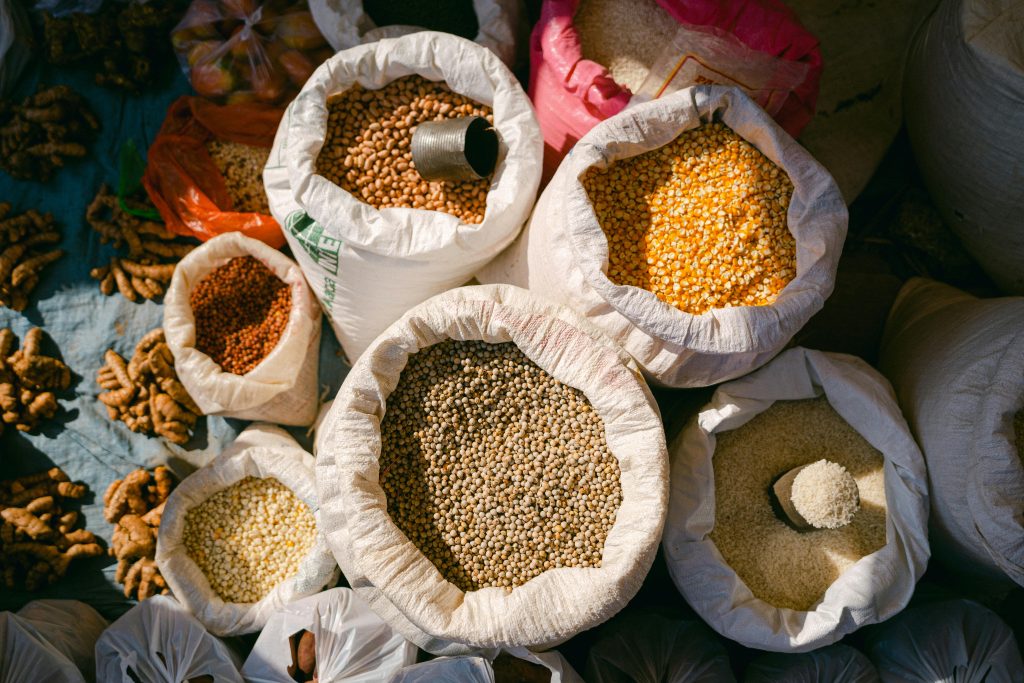
Staple foods are the unsung heroes of West Africa’s food systems, forming the foundation upon which nutritional security and economic stability are built. In countries like Nigeria and Ghana, staple crops such as yam, cassava, maize, and plantains play a critical role in daily diets and livelihoods. These foods are not only integral to the cultural identity of these nations, but they are also pivotal in addressing food security and poverty alleviation.
In Nigeria, staples like yam, cassava, maize, and rice form the backbone of both rural and urban diets. Yam for example, is deeply embedded in the cultural fabric, celebrated during the New Yam Festival, which marks the end of the rainy season. Cassava, another versatile crop, is used to produce various traditional foods such as gari and fufu. According to the Food and Agriculture Organization (FAO), Nigeria is the largest producer of cassava globally, with an annual production approximated to exceed 60 million metric tons. Maize, essential for its versatility, is consumed directly and used as feed in livestock farming, further enhancing food security. Rice, while a more recent staple compared to others, has grown in popularity and is crucial for feeding the growing urban population.
Similarly, in Ghana, plantains, cassava, yams, and millet are the mainstay of the diet. Plantains are a dietary staple, featured prominently in dishes like kelewele and fufu. Ghana produces over 3.5 million metric tons of cassava annually, making it a significant contributor to food security. Yam, much like in Nigeria, holds cultural significance and is celebrated in festivals. Millet, though less prominent, is used in traditional porridges and beverages, contributing to the nutritional diversity.
Staple foods are vital for meeting the nutritional needs of millions of people. They are rich in carbohydrates, vitamins, and minerals necessary for health and well-being. According to the World Bank, staple crops are essential in fighting malnutrition, particularly in rural areas where access to diverse foods might be limited. These crops are also crucial to the local and national economies, creating employment opportunities across the agricultural value chain; from farming to processing and marketing. The cultivation and sale of staple crops are vital sources of income, contributing significantly to poverty alleviation and economic stability.
However, the production of staple foods faces several challenges. Climate change poses a significant threat, altering weather patterns and affecting crop yields. Inadequate infrastructure and storage facilities lead to significant post-harvest losses, reducing food availability and affecting farmers’ incomes. For instance, it is estimated that up to 40% of food produced in Sub-Saharan Africa is lost before it reaches the market.
Despite these challenges, there are substantial opportunities for enhancing the role of staple foods in sustainable food systems. Innovations in agricultural technology, such as drought-resistant crop varieties and improved farming practices, can significantly boost yields and resilience to climate change. Additionally, policy support and investments in agriculture can provide the necessary backing for smallholder farmers, ensuring sustainable production and food security. According to a report by the International Food Policy Research Institute (IFPRI), targeted investments in agricultural infrastructure and research can substantially reduce food insecurity in the region.
Staple foods are integral to the development of a sustainable food system in West Africa. By recognizing their importance, addressing the challenges they face, and harnessing opportunities for innovation and policy support, we can ensure that these vital crops continue to nourish and sustain communities in Nigeria, Ghana, and beyond.
